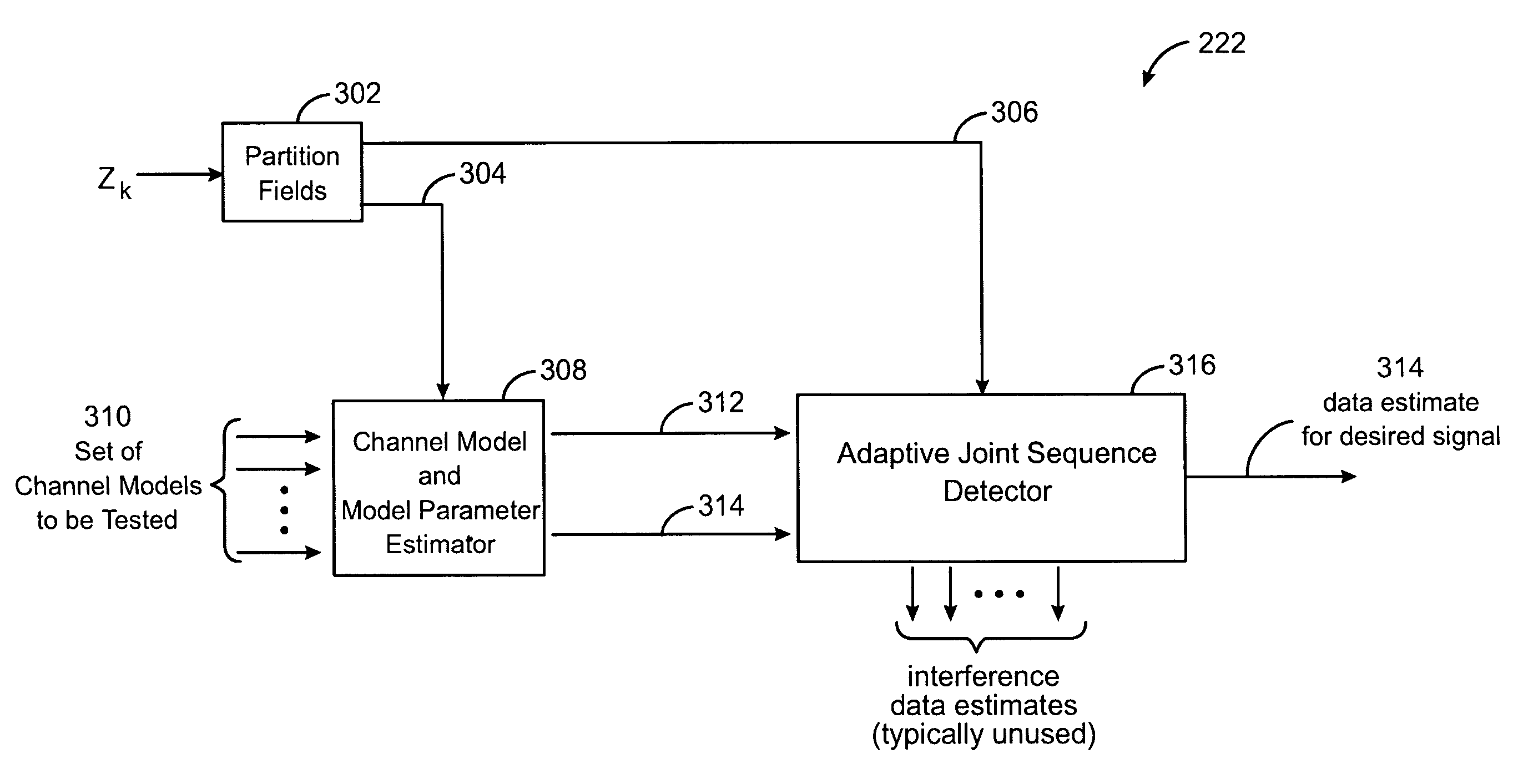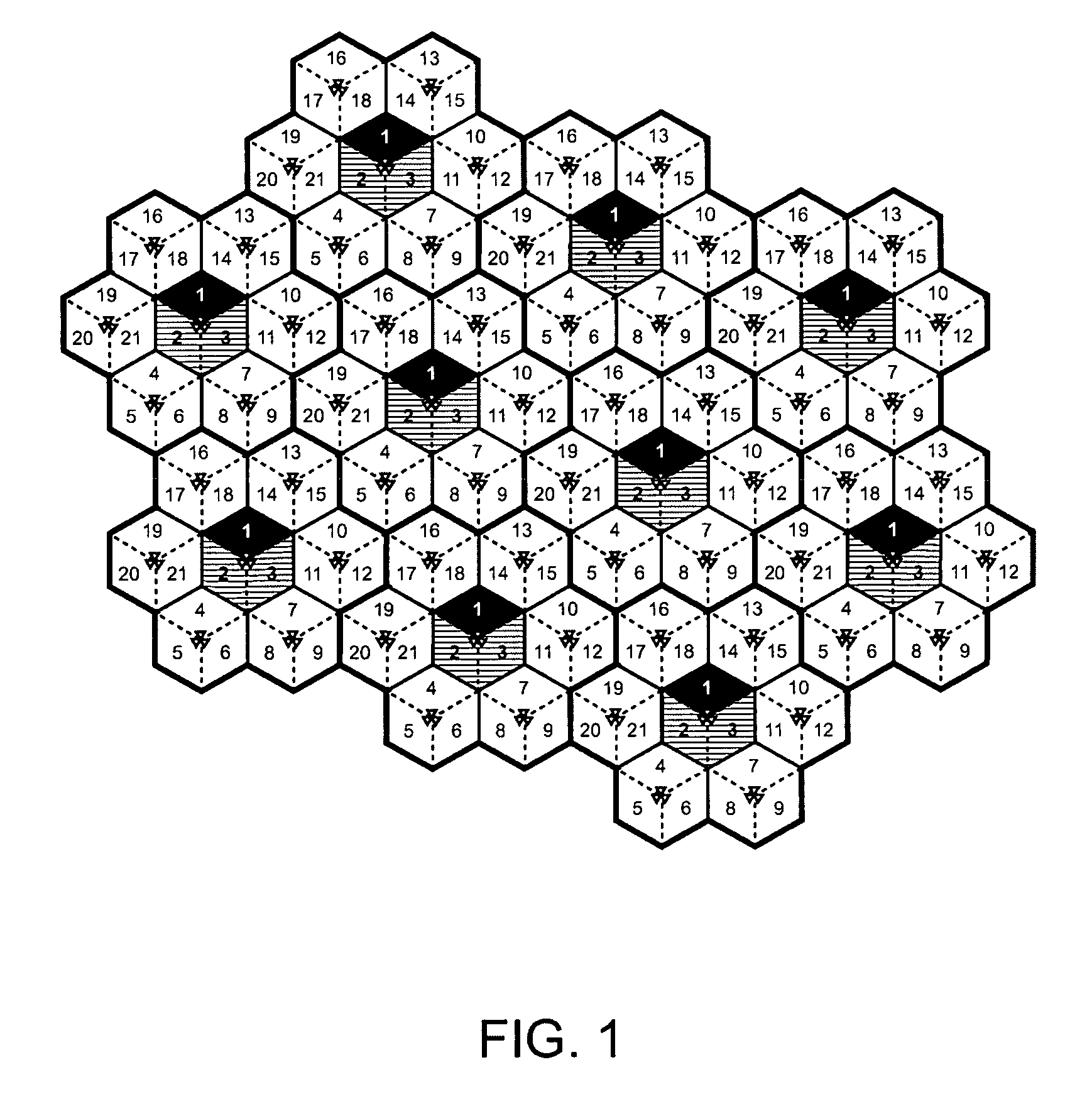Method for co-channel interference identification and mitigation
a co-channel interference and detection method technology, applied in the field of digital signal information demodulation, can solve the problems of reducing the bit error rate (ber) associated with the reception of the desired signal, cci signals may degrade the bit error rate (ber) of the desired signal by orders of magnitude, and multipath-induced intersymbol interference (isi) in frequency selective fading channels constitutes another major source of degradation
- Summary
- Abstract
- Description
- Claims
- Application Information
AI Technical Summary
Problems solved by technology
Method used
Image
Examples
Embodiment Construction
Signal Model and Front-end Processing
[0030]FIG. 2 is a block diagram of a receiver 200 and channel model in accordance with the invention. An Intended User (IU) 202 transmits a desired signal that is to be received by the receiver 200. The desired signal propagates along multiple paths 204 before reaching an antenna array 206 of the receiver 200. At the same time, Co-channel Interference (CCI) users 208 and 210 transmit CCI signals using the same RF frequency band as the desired signal. The CCI signals from the CCI users 208 and 210 propagate along multiple paths 212 and 214, respectively, before reaching the antenna array 206. The CCI users may be from the same cell as the IU or may be from other cells. The antenna array 206 receives additive noise 216. Thus, the combined signal received at the antenna array 206 contains a multi-path desired signal, multi-path CCI signals, and additive noise from the channel.
[0031]The antenna array 206 includes individual antenna array elements 218...
PUM
 Login to View More
Login to View More Abstract
Description
Claims
Application Information
 Login to View More
Login to View More - R&D
- Intellectual Property
- Life Sciences
- Materials
- Tech Scout
- Unparalleled Data Quality
- Higher Quality Content
- 60% Fewer Hallucinations
Browse by: Latest US Patents, China's latest patents, Technical Efficacy Thesaurus, Application Domain, Technology Topic, Popular Technical Reports.
© 2025 PatSnap. All rights reserved.Legal|Privacy policy|Modern Slavery Act Transparency Statement|Sitemap|About US| Contact US: help@patsnap.com



